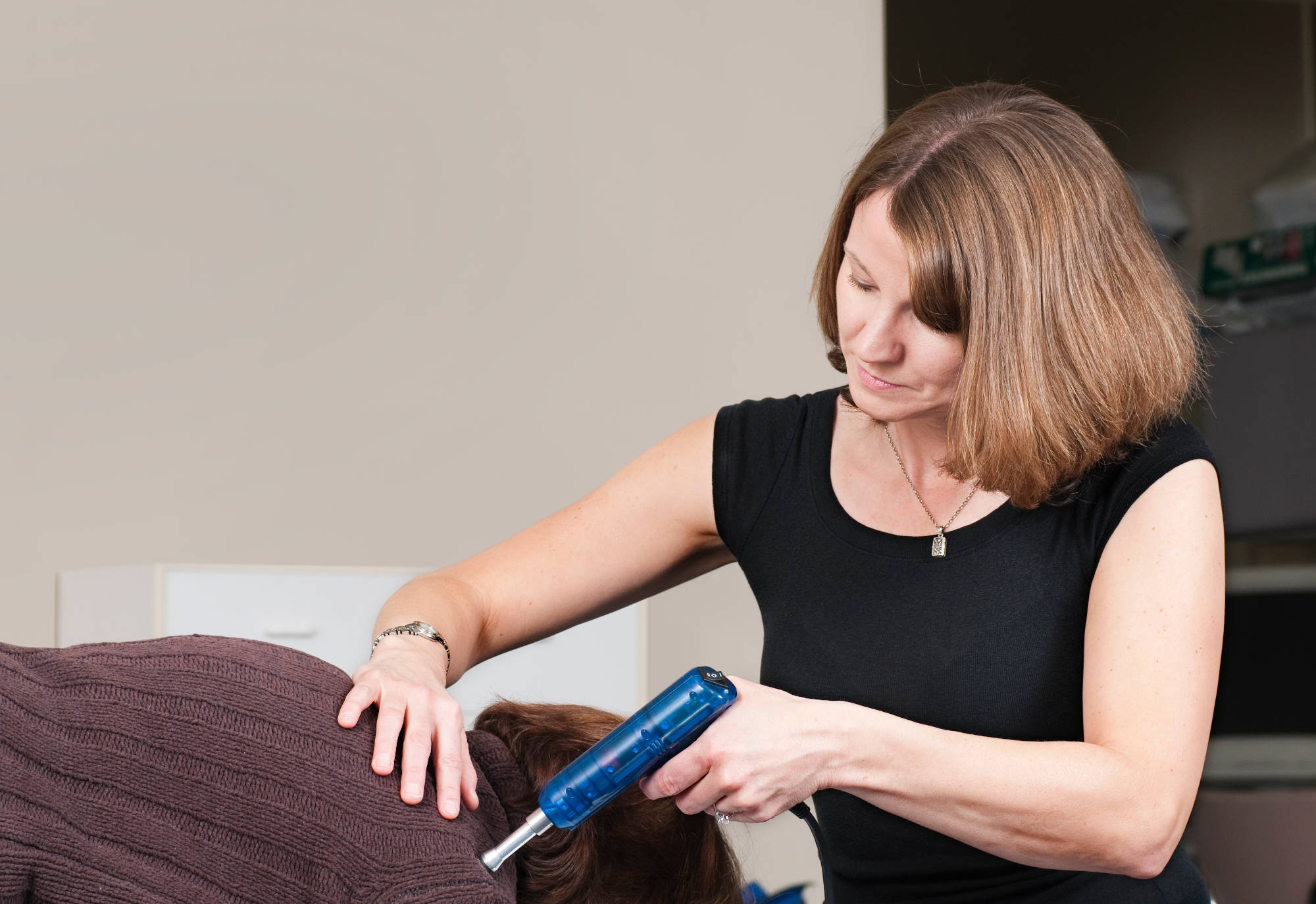The Activator Method for spinal mobilization is a well-established chiropractic technique for alleviating bodily discomforts which specifically stem from spinal or pelvic misalignment. Using the Activator Method is a common practice in the U.S. and internationally— for example, it is also prevalent in Canada and Australia.[1]According to the National Board of Chiropractic Examiners, around fifty percent of all practicing chiropractors in the U.S. currently use or have used this method.[2]
The Activator Method is utilized to treat a number of common ailments, including pain in the neck, back, and lower extremities. The Activator is a hand-held, spring-loaded machine that applies repetitive force to a selected area of the spine. While other spinal mobilization techniques involve the application of a high-velocity, low-amplitude (HVLA) thrust, the Activator provides a gentler pulse that is less likely to erroneously compromise joint positioning. It is consistent in its magnitude of force (approximately 0.3 Joules) and generally is operated at a frequency of approximately 3 milliseconds.
There are a few ways in which a chiropractor may evaluate the ideal site for application. One method of assessment is a leg length evaluation, based on the theory that disparities in length between the two legs are telling of pelvic or spinal misalignments. This method is relatively contentious, given the lack of randomized clinical trials supporting its validity. Generally, static or dynamic spinal palpation is sufficient to determine where the Activator should be put to use.
Though quality studies on the long-term benefits of chiropractic methods are generally scarce, there is a non-negligible body of research supporting the use of the Activator Method for treating pain and misalignment. One study showed that the Activator Method was just as effective as other methods of spinal mobilization as far as long-term improvements in disability and pain in patients with sub-acute non-specific neck pain.[3] Another study found that HVLA spinal mobilization and the Activator Method both resulted in statistically significant improvements in pain and disability in the treatment of cervical spine dysfunction both after therapy and in a one month follow-up.[4] Therefore, while research supports that the Activator Method of spinal mobilization is generally effective at improving disability index and pain ratings, it may not necessarily be more effective than other methods of spinal mobilization.
[1] Huggins T, Boras AL, Gleberzon BJ, et al. Clinical effectiveness of the activator adjusting instrument in the management of musculoskeletal disorders: a systematic review of the literature. Journal of the Canadian Chiropractic Association 2012;56(1):49-57.
[2] National Board of Chiropractic Examiners. Job Analysis of Chiropractic 2005: A project report, survey analysis, and summary of the practice of chiropractic within the United States. Greeley, CO. January 2005.
[3] Gemmell, H., Miller, P. Relative effectiveness and adverse effects of cervical manipulation, mobilisation and the activator instrument in patients with sub-acute non-specific neck pain: results from a stopped randomised trial . Chiropr Man Therap 18, 20 (2010). https://doi.org/10.1186/1746-1340-18-20
[4] Wood TG, Colloca CJ, Matthews R. A pilot randomized clinical trial on the relative effect of instrumental (MFMA) versus manual (HVLA) manipulation in the treatment of cervical spine dysfunction. J Manipulative Physiol Ther. 2001 May;24(4):260-71. https://doi.org/10.1067/mmt.2001.114365. PMID: 11353937.
